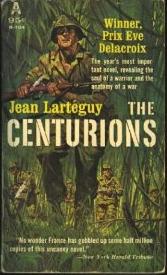ONCE AGAIN—THE FRENCH FOREIGN LEGION. THIS TIME THEY ARE IN MALI. IT’S PRACTICALLY FULL CIRCLE.
 I first ran across the French Legion through the books of P.C. Wren.
I first ran across the French Legion through the books of P.C. Wren.
If your life went adrift in one of a thousand ways—and you were relatively young and fit, you could always adopt a false name, enlist in the French Foreign Legion, and start life anew. You didn’t even have to speak French. The Legion would teach you. The Legion did not explain how it taught you—which was just as well.
The downside was that the Legion owned you for five years, discipline was incredibly tough—words are somewhat inadequate at this point—and, and your chances of being killed or injured were significantly higher than if you joined a more conventional military unit. In effect, the Legion becomes your country. It fights for France, but you fight for the Legion (and the Legion does not let you forget that fact).
P.C. Wren’s books were not particularly cheerful—and his stories rarely ended well—but they fascinated me. Frankly, at the time just about anything seemed preferable to boarding school; and the prospect of fighting Arabs in depths of the Sahara seemed quite exciting to me. After all, I’d have a Lebel rifle. I had no idea what a Lebel rifle was—except in a rather fuzzy sense—but it sounded cool. Since I know you are dying to know more, here are some details.

The Lebel Model 1886 rifle (French: Fusil Modèle 1886 dit "Fusil Lebel") is also known as the "Fusil Mle 1886 M93", after a bolt modification was added in 1893. It is an 8mm bolt action infantry rifle which entered service in the French Army in April 1887. It is a repeating rifle that can hold eight rounds in its forestock tube magazine plus one round in the transporter. The Lebel rifle had the distinction of being the first military firearm to use smokeless powder ammunition. In spite of outdated features, such as its tube magazine and the sharply tapered case of 8mm Lebel ammunition, the Lebel rifle remained the basic weapon of French infantry during World War I (1914–18). Altogether two million eight hundred and eighty thousand ( 2,880,000 ) Lebel rifles were produced by the three French State manufactures.
 Since I was about eleven when I read P.C. Wren, I never did enlist in the Legion, and it might have remained buried in the recesses of my mind. However, some years later, a quite extraordinary book appeared—which had a profound effect on my thinking and, though I did not realize it at the time, on the rest of my life.
Since I was about eleven when I read P.C. Wren, I never did enlist in the Legion, and it might have remained buried in the recesses of my mind. However, some years later, a quite extraordinary book appeared—which had a profound effect on my thinking and, though I did not realize it at the time, on the rest of my life.
It was called THE CENTURIONS and told the story of Dien Bien Phu, the French war in Algeria, and—above all—of a rather special parachute regiment.
Originally, it was written in French, but it was beautifully translated by Xan Fielding. Subsequently, a sequel, THE PRAETORIANS, was written which brought the story up to the end of the Algerian war.
Later, it was made into a movie starring Anthony Quinn but the movie, though exciting enough, lacked the subtlety and complexity of the book. In essence, though the book was action packed enough, its great strength was that it featured marvelous characters—and was about ideas. It was also heavily inspired by actual events which resulted in the disbanding of one of the Legion’s parachute regiments.
To be continued…

No comments:
Post a Comment